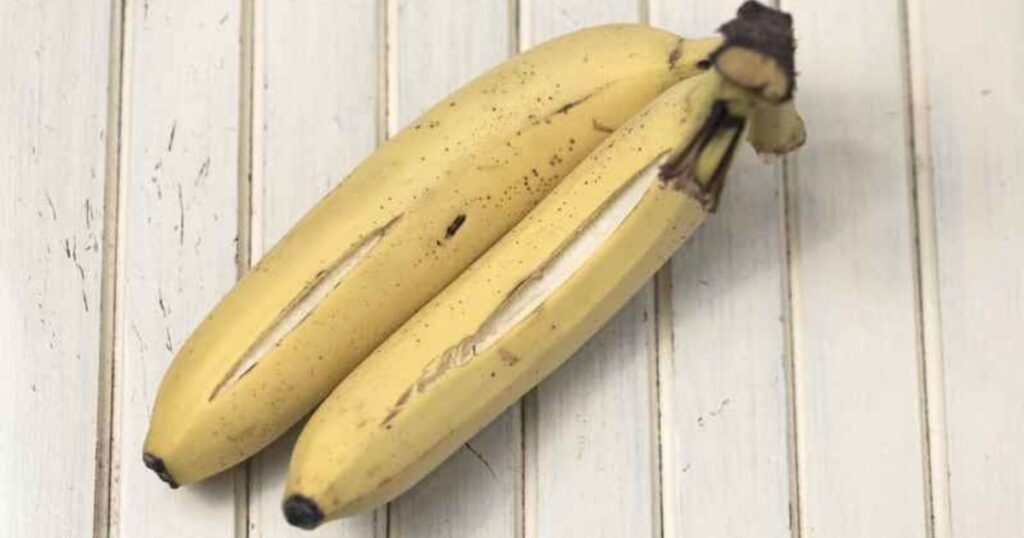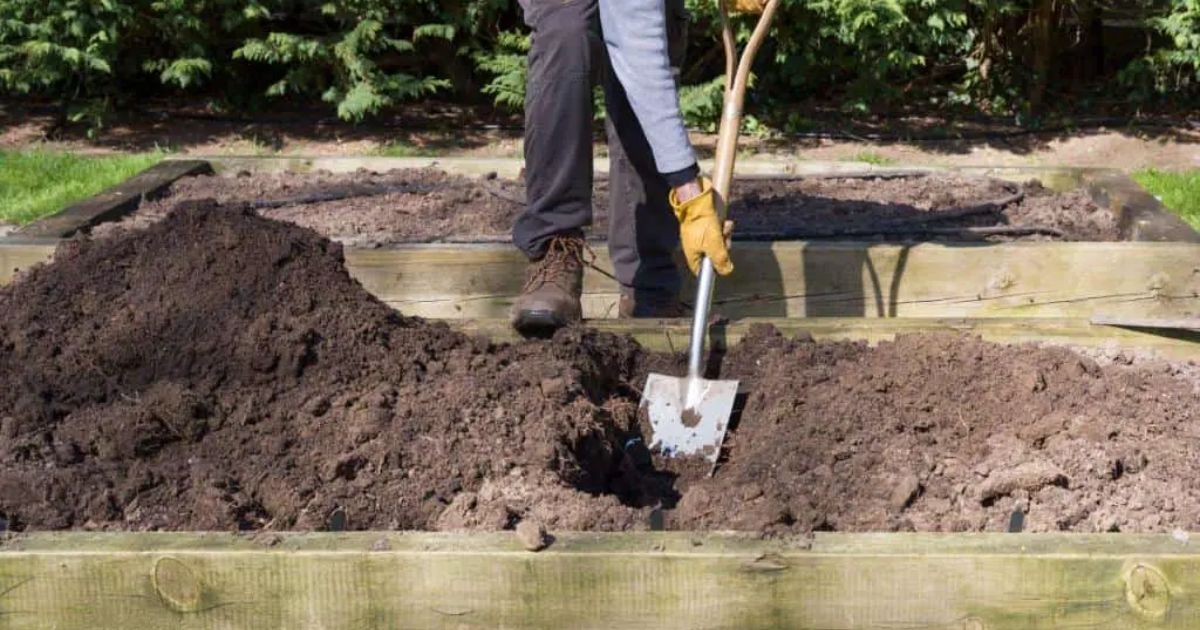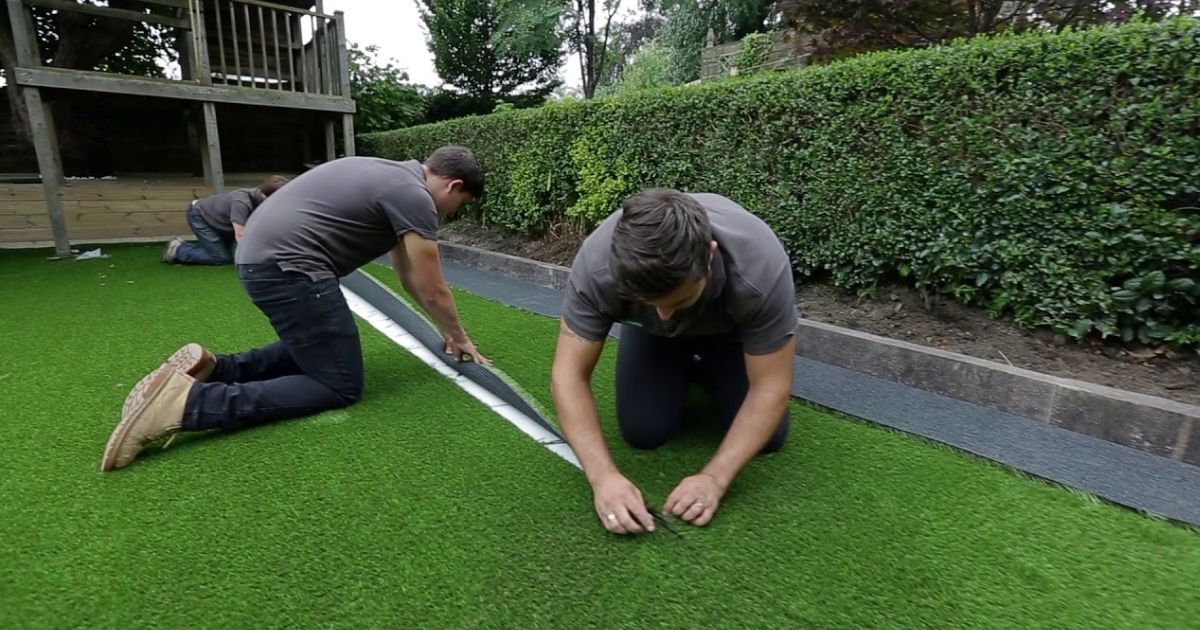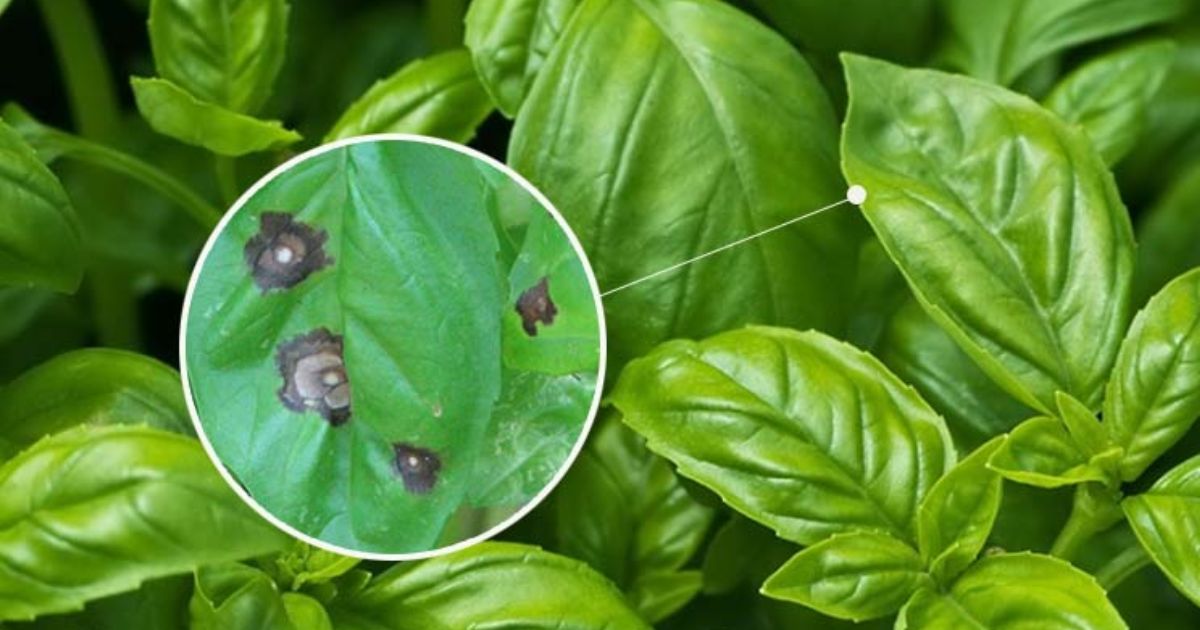Bananas are a favorite fruit for many due to their convenience and nutritional benefits, but one common problem frustrates consumers and farmers alike – bananas that split open unexpectedly. This seemingly minor issue can lead to quicker spoilage, attracting pests and even affecting the taste and texture of the fruit. In this article, “Bananas Split Open: Causes, Solutions, and How to Prevent It,” we’ll dive deep into the reasons why bananas split open, practical solutions for handling this problem, and the best ways to prevent it from happening in the first place.
Understanding why bananas split open can help you make the most of your fruit and avoid unnecessary waste. There are several reasons behind this common issue, whether it’s due to environmental factors, improper storage, or the natural ripening process. Fortunately, you can enjoy your bananas longer and fresher with the appropriate skills and understanding. Let’s explore the causes, solutions, and preventive measures to keep your bananas from splitting open.
Why Do Bananas Split Open?
Natural Causes of Banana Splitting Open
Bananas undergo a natural ripening process that significantly affects whether they split open banana. Ethylene is a gas that bananas release when they ripen, which accelerates the breakdown of turn starch into sugar, which makes the fruit squishy and enlarges. The peel is a protective layer, but as the fruit grows and swells, the peel can only stretch so much. The banana will split open if the internal pressure becomes too great due to rapid growth.
Temperature changes also play a key role in this process. The peel becomes more brittle when bananas are exposed to fluctuating temperatures, especially from cold to warm environments. This brittleness makes the peel less flexible and more prone to splitting, especially when combined with the natural pressure from ripening. For example, a sudden increase in heat can accelerate the ripening process and lead to quicker splitting.
Environmental Factors
External environmental factors can also cause bananas to split open. Excessive heat and high humidity are two of the most common causes. Bananas are sensitive to temperature, and when stored in a hot or humid environment, the ripening process speeds up significantly. This rapid ripening increases the pressure inside the fruit, causing the peel to crack and split open banana.
Poor storage conditions can further exacerbate the problem. For instance, leaving bananas in direct sunlight or storing them near heat sources can create an environment ripe for splitting. Additionally, improper handling practices during transportation and at grocery stores can lead to damage. Bananas are often stacked or handled roughly, which weakens the peel, making it more vulnerable to splitting even before reaching your home.
Genetic and Varietal Differences
The type of banana can also influence its likelihood of splitting. Some banana varieties are naturally more prone to banana splitting open due to their genetic makeup. These bananas may have thinner peels or ripen more rapidly, which increases the chances of the fruit bursting through the peel.
In addition, different growing conditions, such as the soil type, climate, and farming practices, can affect the banana’s peel strength and flexibility. Bananas grown in regions with extreme temperature variations or inconsistent humidity levels may develop weaker peels, making them more susceptible to splitting during ripening.
How to Fix Bananas That Have Split Open
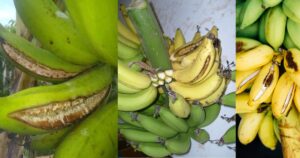
Can You Still Eat Split Bananas?
One of the first concerns people have when they see a banana split open is whether it’s still safe to eat. The good news is that in most cases, a split banana is still perfectly fine to consume, as long as the fruit inside hasn’t been exposed for too long. Bananas have a natural barrier with their peel, so even if the peel splits, the fruit inside remains protected for a while.
However, inspecting the banana splıt for any signs of spoilage is important. If the fruit has turned brown or mushy, developed a sour smell, or has mold, it’s best to discard it. But if the split is recent and the fruit inside looks fresh, the banana is safe to eat. Remove the peel and enjoy it as usual, or use it in a recipe.
Creative Ways to Use Split Bananas
Bananas that have split open are ideal for a variety of culinary uses, especially when they’ve ripened beyond the point of being eaten fresh. One popular way to use split bananas is in smoothies. Their soft, sweet texture blends perfectly with other fruits, yogurt, or milk to make a creamy drink.
Split bananas are also excellent for baking banana bread or adding to desserts like banana pudding or pancakes. Their sweetness and softness make them easy to incorporate into recipes, reducing waste and maximizing flavor.
Freezing them is a great option if you decide to use banana splıt immediately. Peel the broken banana, cut it into slices, and for storage, place it in an airtight container or freezer bag. Frozen bananas can later be used in smoothies, baked goods, or even as a healthy frozen treat on their own.
Repurposing Split Bananas for Gardening
If your split bananas are too far gone to eat, wait to toss them in the trash! Overripe or split bananas are perfect for composting and can offer your garden abundant nutrients. Bananas are rich in potassium, phosphorus, and other essential nutrients that help plants thrive.
To use split bananas in compost, chop them into smaller pieces and add them to your compost bin. As they break down, they’ll release valuable nutrients that can improve soil quality and encourage healthy plant growth.
Another option is to use splitting banana directly as a natural fertilizer. You can bury pieces of banana near the roots of garden plants like tomatoes, roses, or peppers. The banana will decompose slowly, releasing nutrients directly into the soil and promoting stronger, healthier plants Why the Banana Plant is an Herb AND a Berry.
How to Prevent Bananas from Splitting Open
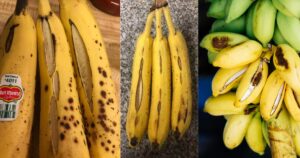
Proper Storage Tips
One key way to prevent bananas from splitting open is through proper storage. Conjoined bananas thrive in a cool, dry environment. The ideal storage temperature is between 55°F and 60°F (13°C to 16°C), which allows them to ripen slowly without being exposed to extremes that can cause splitting. High humidity can speed up ripening, leading to excessive internal pressure and eventual splitting, so keeping them in a well-ventilated area is best.
You should avoid refrigerating bananas until they are fully ripe, as cold temperatures can disrupt the ripening process and cause the peel to turn black. Likewise, storing bananas in direct sunlight can cause them to overheat, ripen too quickly, and split open. The best practice is to store bananas in a shaded, room-temperature space, away from heat sources.
Another important tip is to keep bananas separate from other fruits, particularly apples, and avocados, which release ethylene gas. Ethylene speeds up bananas’ ripening process, causing them to ripen too quickly and leading to potential splits. If you want your bananas to last longer, store them away from these gas-producing fruits.
Handling Practices to Avoid Splitting
How you handle bananas can significantly impact whether or not they split open. Gentle handling is essential when picking and transporting bananas. Rough handling, such as dropping or tossing them, can cause bruising or small cracks in the peel that weaken its structure, making it more prone to splitting as the banana split helado ripens.
When choosing a splitting banana, always look for ones with smooth, unblemished skin. Bananas with visible dents or small splits are likelier to break open as they ripen. By carefully selecting undamaged bananas, you’ll increase their chances of staying intact through the ripening process.
Timing Your Banana Consumption
Understanding the different ripening stages of bananas can help you prevent them from splitting open. Bananas usually start green and gradually turn yellow as they ripen. Eating them when they reach your desired ripeness (just as they turn yellow or with a few brown spots) helps avoid the rapid softening that leads to splits. If you wait too long, bananas will continue to ripen and may burst open due to excessive internal pressure.
To slow down the ripening process, a simple household trick is to cover the banana stems with aluminum foil or plastic wrap. This method reduces the release of ethylene gas from the stems, helping to keep the banana split helado fresher for longer and delaying the splitting process. Another option is to hang bananas on a banana hook or store them in a basket to allow for better air circulation and prevent bruising.
Conclusion
Bananas splitting open is a common issue caused by natural factors like rapid ripening, excessive internal pressure, and temperature fluctuations. Environmental factors including extreme heat, high humidity, and poor storage can accelerate the splitting process, while improper handling during transportation or at home can weaken the banana’s peel. Additionally, genetic factors make certain banana varieties more prone to splitting.
To prevent bananas from splitting, store them away from the sun, in a cool, well-ventilated place, and other ethylene-producing fruits. Gentle handling and choosing bananas with smooth, unblemished skin can also reduce the chances of splitting. Timing your consumption based on the ripening stages and applying tricks like wrapping the stems can further slow the ripening process.
Following these simple storage and handling tips, you can keep your bananas fresher and avoid unnecessary food waste. Apply the solutions shared to enjoy your bananas at their best and make the most out of this delicious, versatile fruit!
FAQs:
Q1: Is it safe to eat bananas that have split open?
Yes, eating bananas that have split open is generally safe if the fruit inside hasn’t been exposed for too long. Be sure to check for signs of spoilage like browning, mushiness, or an off smell before consuming. If the banana looks and smells fresh, eating despite the split peel is safe.
Q2: Can split bananas spoil faster than intact bananas?
Yes, split bananas can spoil faster than intact ones because the fruit inside is exposed to air, which speeds up the ripening and decay process. This exposure can attract pests and increase the risk of mold or rot, so it’s best to use split bananas quickly.
Q3: What is the best way to store bananas to avoid splitting?
To avoid splitting, store bananas in a cool, dry place between 55°F and 60°F (13°C to 16°C). Keep them out of direct sunlight and away from other ethylene-producing fruits like apples and avocados. Gentle handling and avoiding bruising during transport also help prevent splitting. To slow down the ripening process, you can also wrap the stems with plastic.

